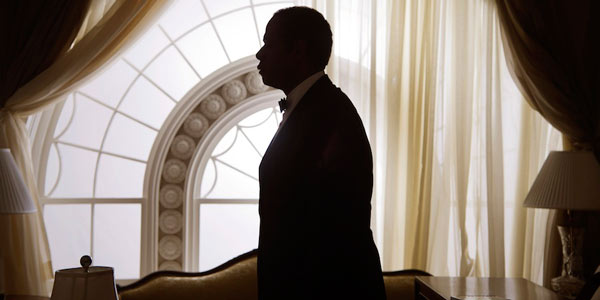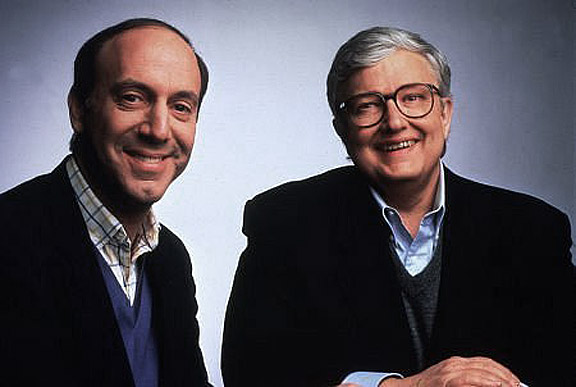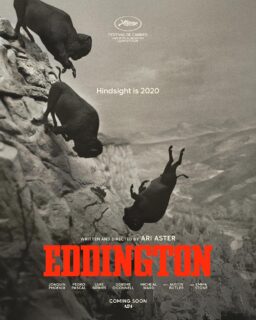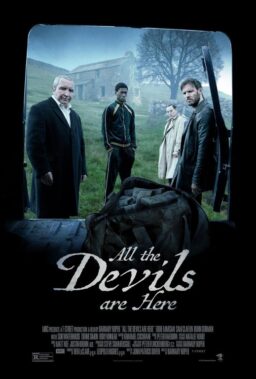Before Saturday’s experiment got underway, twenty-something hipsters thronged the hallway leading to Greenpoint’s Light Industry. Light Industry’s an all-purpose gallery space with industrial carpeting, track lighting, and unvarnished wood sliding doors at the far wall. Greenpoint’s a working class, largely Polish/Polish-American neighborhood, the shabby sister to nearby, considerably higher-maintenance Williamsburg. Factories, construction sites, empty lots, and some delis surround Light Industry. The only nearby subway is the G, a hellish route along which trains run every 20 minutes—on a good day.
Inside Light Industry, folding chairs surround a projector on a podium in the center of the room. Two giant tripod speakers flank the wall opposite the entrance. A second projector is at the back. Guest programmer J. Hoberman sits here, animatedly surveying the room’s attendants. They talk about their sex lives, hypochondriac fears of Lou Gehrig’s Disease, and suspicions of poseur neighbors (“Perfectly accessorized people that clearly could care less!”).
The evening’s screening is advertised on Light Industry’s website as a “pedagogical projection.” But this is an event, and Hoberman, the iconic film critic that started at the Village Voice, and can now be read in the New York Times, is its elusive leader. He keeps his opening remarks to a minimum, preferring to let attendants jump to their own conclusions. He calls the film we’re about to see a collision of two “film objects” rather than films. They’re not just “films” anymore since that term, as he argues in his recent book “Film After Film,” is no longer exactly applicable. The movies that Hoberman screened on Saturday are not important unto themselves anyway. It’s the “communion” these two films share, to paraphrase Hoberman, that really matters. Two films are screened at the same time, on the same physical space, one on top of the other. They talk to each other, making additional commentary during the event feel intrusive, and rudely demystifying. Let your mind wander, and absorb what it can.

Projected on the same blank wall, Hoberman presented a double feature of “The Butler” and “White House Down,” two films set in the White House, and concerned with President Obama’s presidency. The film(s) was preceded by a clip from “Rufus Jones for President.” This scene of a little black boy tap-dancing was screened without introduction or comment, though it is mentioned in Hoberman’s recent Film Comment article, “Cine Obamarama.” Still, on Saturday night, you either recognized the clip, or you didn’t. The scene’s meaning is inherent; it doesn’t need more context than that. The same goes for the music Hoberman piped into Light Industry before the evening, including an unidentified novelty song that played in its entirety after his introduction. A black singer boasts about leading America to peace, and even jokingly threatens to straighten Nikita Khrushchev out by making him take his missiles out of Cuba.
Think of this pre-show entertainment as avant garde coming attractions. It’s Hoberman’s way of making Saturday’s screening feel less like school. He’s previously presented similar double-projected presentations at New York University during Cinema Studies courses he’s taught as an adjunct professor. Double/Triple/Quadruple projections of the first four “Rocky” films, or a David Cronenberg twofer of “Eastern Promises” and “A History of Violence” reveal common formulas, and concerns through what Hoberman calls “points of contact.” As the films unfold, they unpredictably sync up, and clash. That chaotic union is, as Hoberman explains, part of the experience of attending a double-projected screening. Hoberman didn’t even know if the two films would have much to say to each other since last night was the first time he’d screened them together. “Tonight is a world premiere,” he joked.

Hoberman’s Franken-film, playfully dubbed “White House Butler Down,” is disorienting. Watching a film projected within another film isn’t offensively off-putting, but it does take some getting used to. The films are shown in two concentric rectangles. They approximately start and stop at the same time: “The Butler” is 131 minutes long while “White House Down” lasts 132 minutes. “The Butler,” a bland historical drama set in the White House, is projected inside “White House Down,” a monotonous action film that one nearby congregant described as “‘Die Hard’ in the White House…or ‘Under Siege’ in the White House.” If you strain your ears, you can hear the “White House Down” soundtrack playing from far-away, tinny speakers. The film’s dialogue was primarily presented in enormous yellow subtitles. “The Butler”‘s soundtrack is harder to ignore: it’s blasted through the two speakers at the front of the room.
Super-imposing “The Butler” over “White House Down” is striking since it makes the former movie look like a tumorous growth obstructing your view of the latter. That presentation also creates its own meaning: “The Butler,” a period piece that climaxes with main protagonist Cecil (Forest Whitaker) meeting President Barack Obama, is a ghost haunting “White House Down”‘s fictional present day. “White House Down” also features a black president, played by Jamie Foxx, but it’s a different kind of progress narrative.
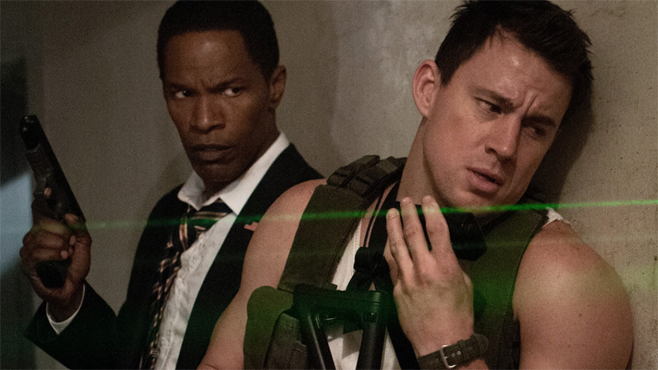
“The Butler” encourages viewers to celebrate President Obama’s position as a black president by marveling at the sacrifices and changes that Cecil and his family undergo over several decades before Obama’s election. “White House Down” reaches a similar conclusion but by different means: the White House is under siege, and Foxx’s president, a symbol of progress, needs to be protected by Channing Tatum’s wannabe Secret Service-man from disenchanted white traitors. “The Butler”‘s narrative is ostensibly about moving forward while “White House Down” is essentially regressive.
Viewed together, as a schizoid whole, “White House Butler Down” defensively reassure viewers with violent, nigh-on apocalyptic images. In one scene, the Capitol building explodes as Cecil and his wife Gloria (Oprah Winfrey) tearfully watch their son Louis (David Oyelowo) leave for college. And in an earlier scene, Foxx’s President Sawyer arrives at the White House with a chipper “Be it ever so humble” while Cecil’s father lies dead on his back in a cotton field. These conflicting images give new meaning to the incantatory phrase Cecil repeats to himself at beginning and end of “The Butler” when he describes how he performs his duties in the White House: “You must look through your eyes, see what it is that they want, see what it is that they need, anticipate, bring a smile to the principal’s eyes.” Hoberman’s two-headed project rejects its individual narratives’ similarities by stacking them on top of each other. Basically, he playfully agitated Light Industry participants with a florid, melancholic melodrama that frequently erupts with gunfire, and mushroom-cloud explosions.
In this arena-like debate, the conversation that “The Butler” and “White House Down” have with each other is consistently disturbing, and often funny, in a smart-ass kind of way. The two films’ adversarial dialogue reaches a head in scenes set in “The Reagan Administration,” as one intertitle announces. A pissed-off “White House Down” character, possibly James Woods’s antagonist, tells Nancy Reagan (Jane Fonda), who is just about to invite Cecil and Gloria to dinner, “Fuck You” via a blaring yellow subtitle. Soon after that, Ronald Reagan gives a placating speech with Wood’s gun shoved in his face. These two films may be saying the same thing, but they definitely do not get along.
That hysterical tension is what makes “White House Butler Down” such a fun, deceptively simple provocation. It exposes “The Butler” and “White House Down”‘s shared agenda by sheer juxtaposition. Even shared images of reconciliation, like when Cecil re-unites with Louis at the same time that Tatum’s white savior embraces his daughter Emily (Joey King), are funny because they seem false when shown together. That kind of impish corollary can breed suspicion: just how seriously does Hoberman want us take this thing? If he’s right, and the proof is in the proverbial pudding, then “White House Butler Down” suggests he’s waggishly criticizing movies by recycling them wholesale. Here’s hoping his next experiment is just as fruitfully alienating.

